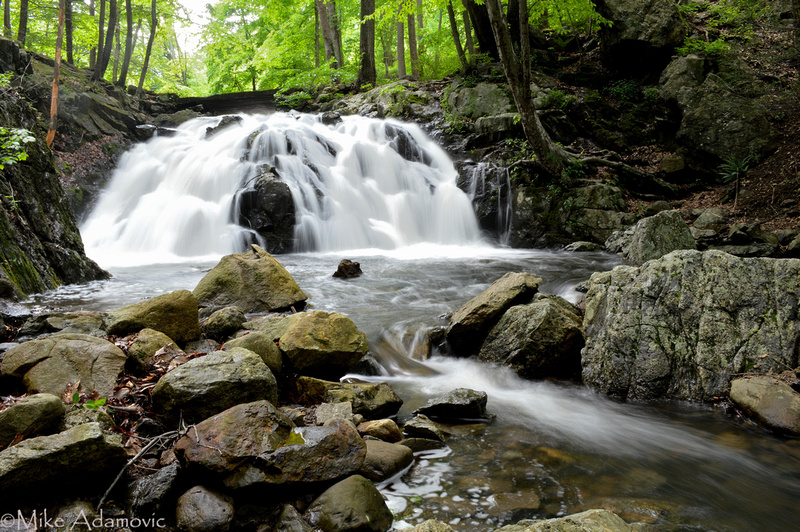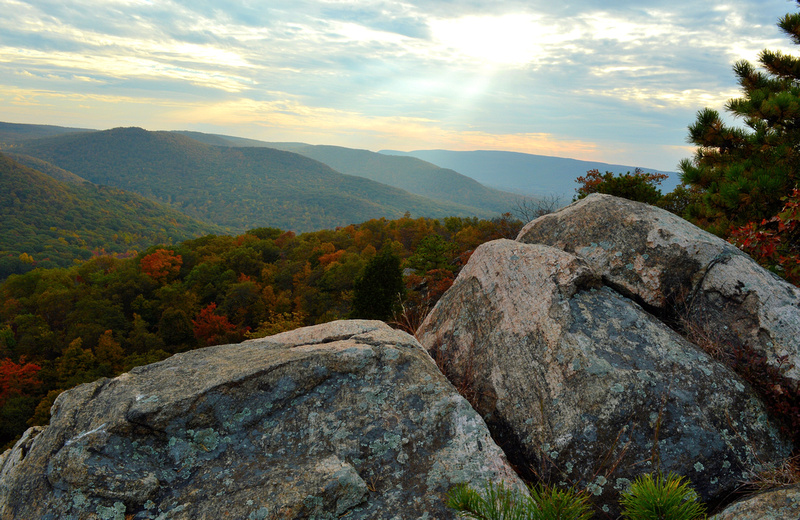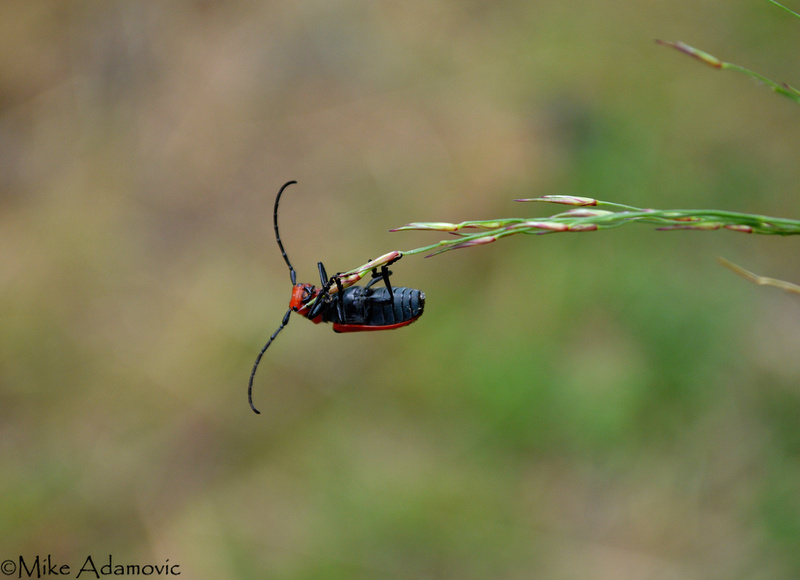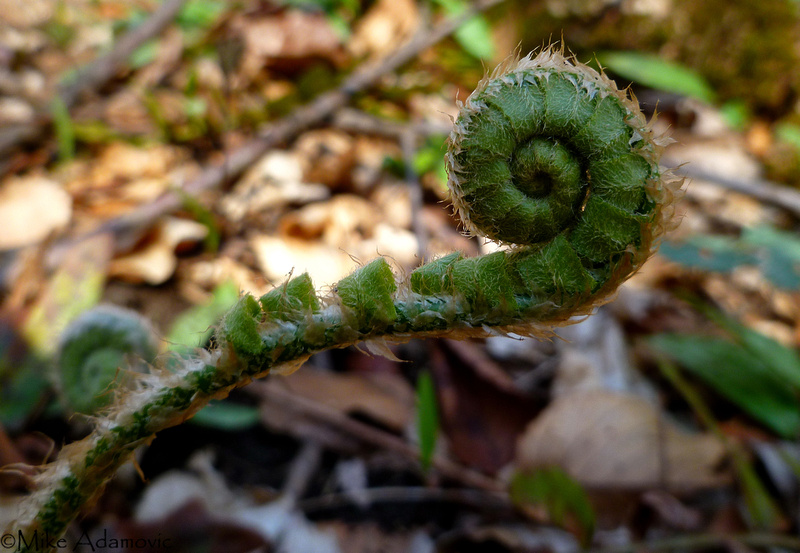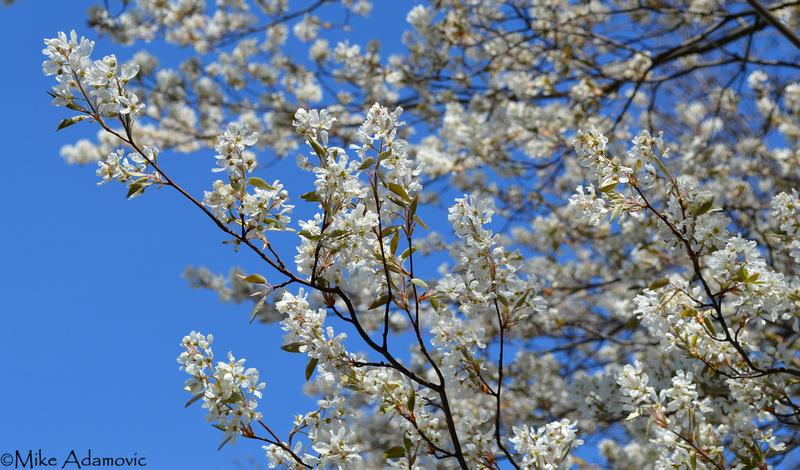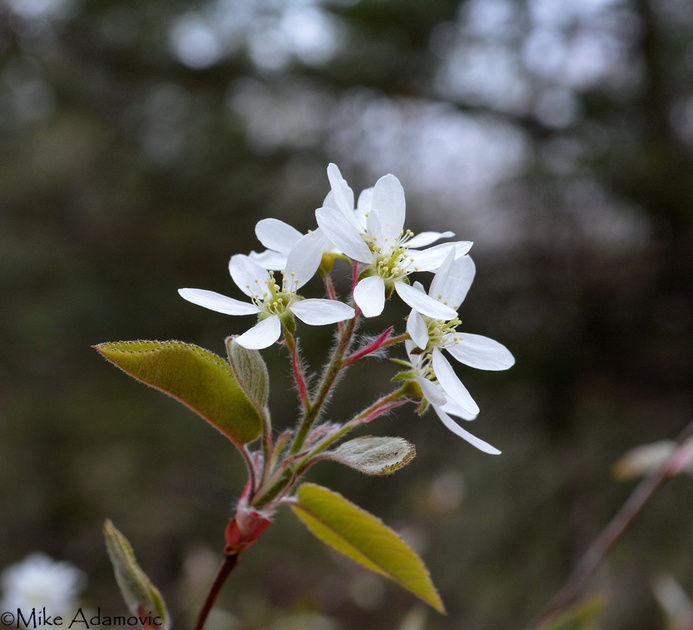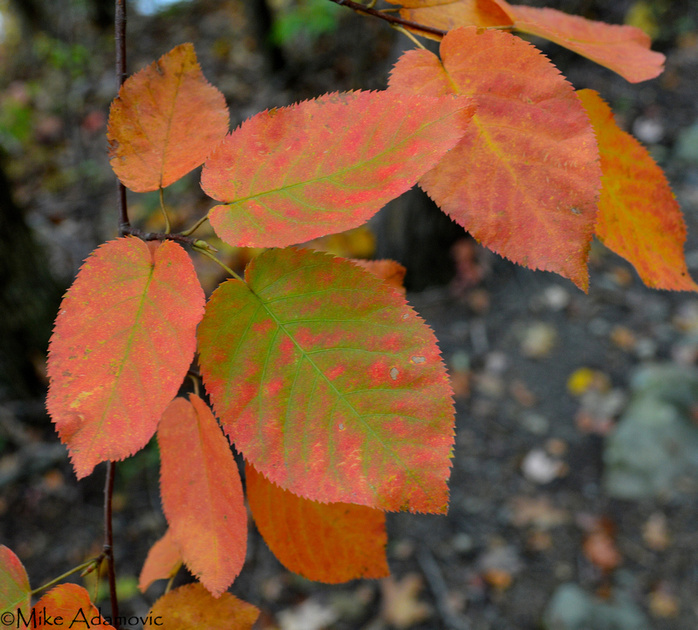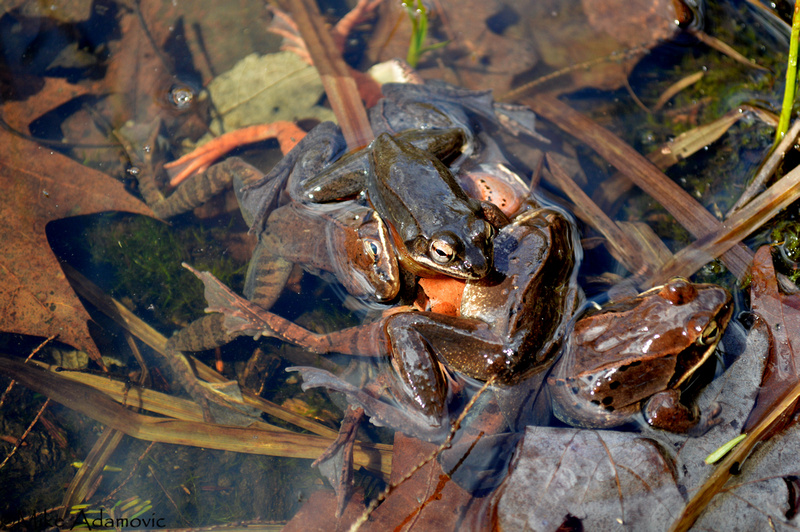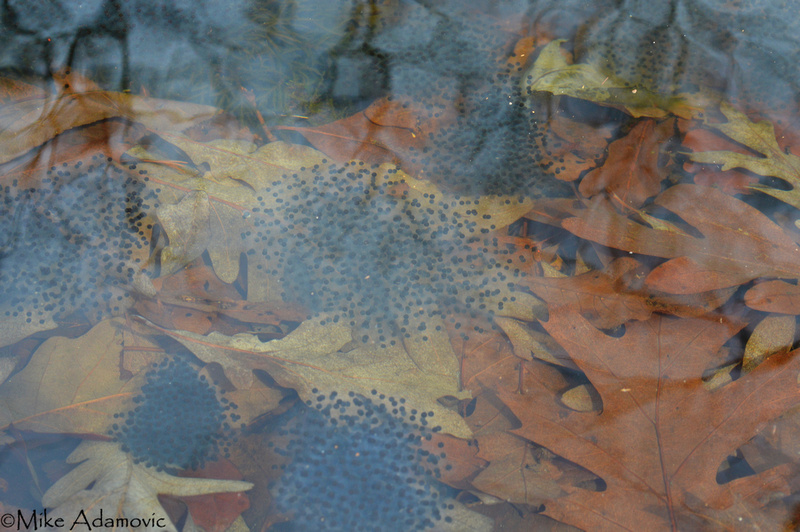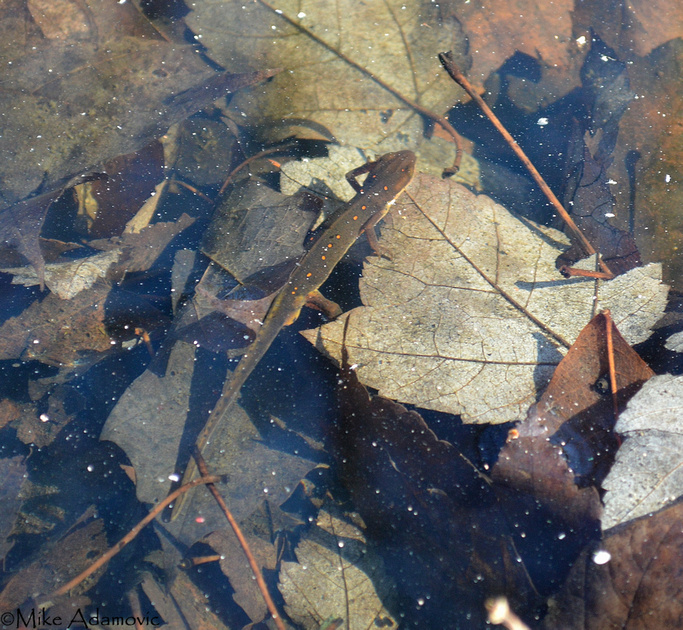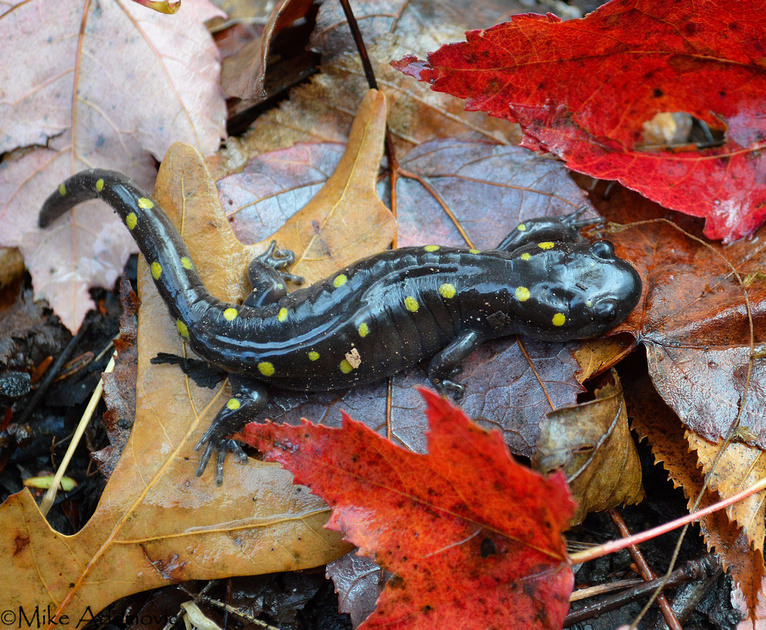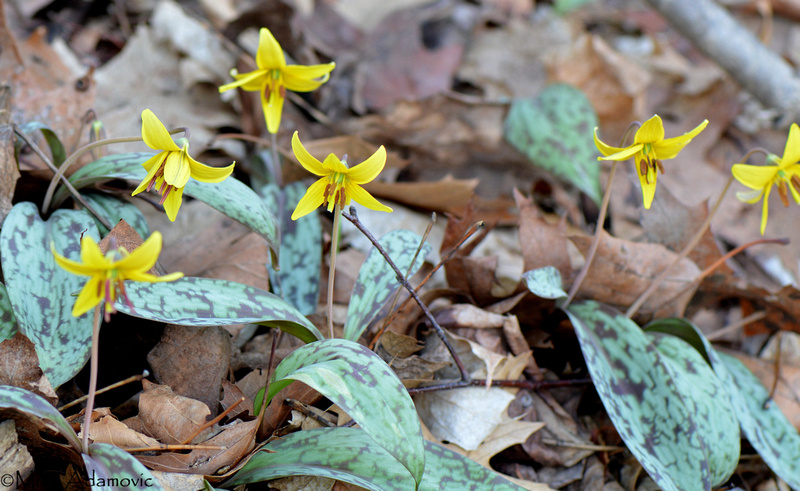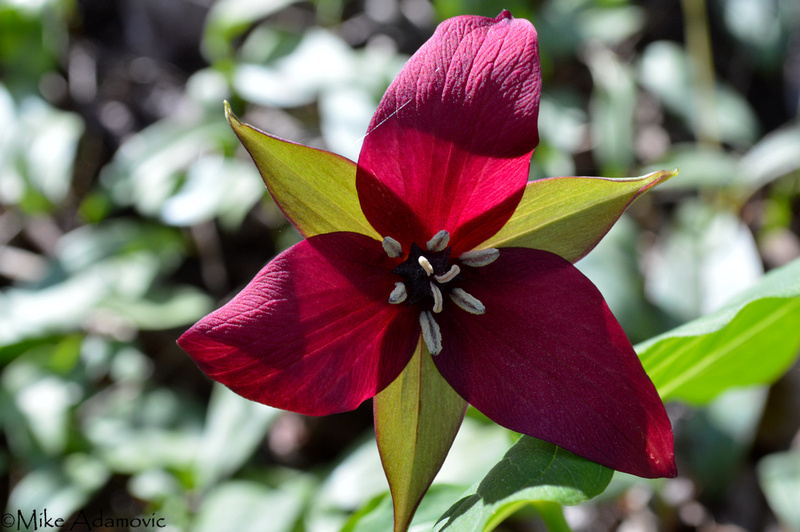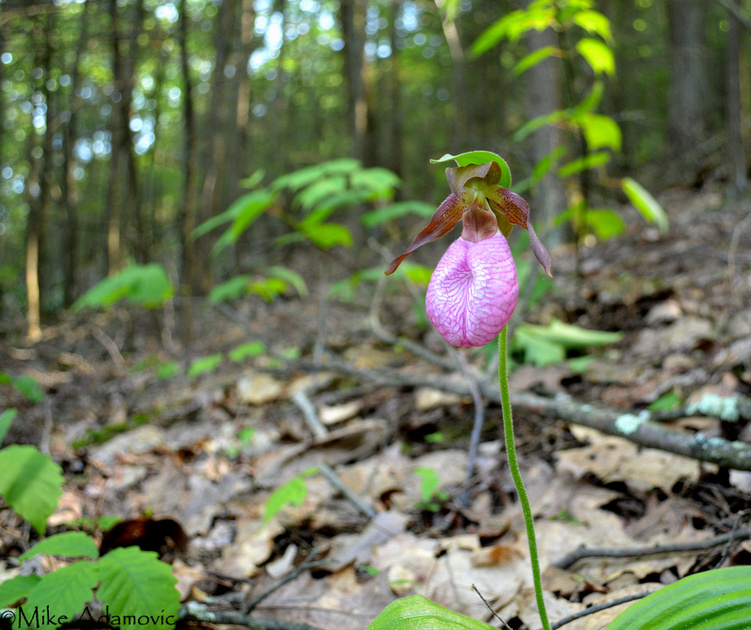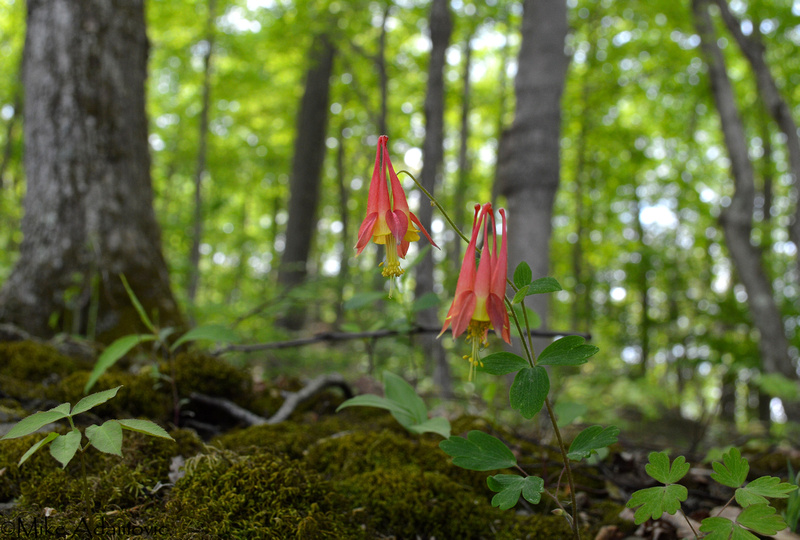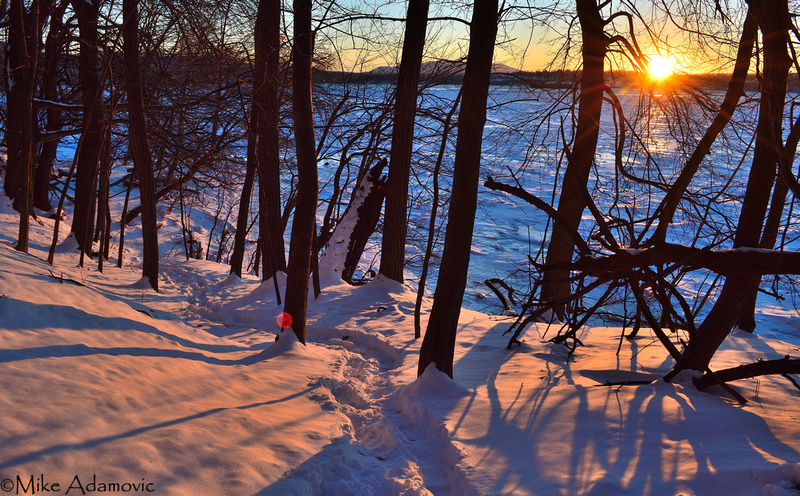Thoreau's "Tonic of Wildness"
Nature today is an element which we find ourselves as a society increasingly thirsting for as our lives become more disconnected and removed from the environment. It’s no coincidence that in the last several decades the environmental movement, hiking, backpacking, “going green,” and other similar activities and trends have proliferated. When we extricate ourselves from the natural world we begin to wither and degrade in the same manner as if we were suffering from a tangible vitamin deficiency or ailment. To ameliorate this, as Henry David Thoreau noted, “We need the tonic of wildness;” that it’s necessary from time to time to escape into nature and “wade sometimes in the marshes where the bittern and meadow-hen lurk… to smell the whispering sedge where only some wilder and more solitary foul builds her nest, and the mink crawls with its belly close to the ground.” Essentially, for this rejuvenating tonic to be effective one must completely surround and immerse themselves in the wild and untamed influences of nature. Thoreau found that everlasting vigor and contentment was not to come from the amalgamation of noxious compounds forged together in a dank and congested lab, like the folly quest of an alchemist in search of some magical elixir, but that a real fountain of youth, a naturally occurring panacea, already exists and can be extracted from the earth as easily as an inhalation of breath into the lungs—taking a walk outside and imbibing in the fresh air and surrounding beauty is all that’s required. Such a simple discovery—yet one commonly overlooked by most who happen to believe happiness, health, and wealth can only come about by human innovation. He freely shared his keen insights, hoping to better a world he saw as following a “descending and darkening” path. “Our vision does not penetrate the surface of things,” Thoreau records in Walden, pithily adding, “We think that that is which appears to be.” This is a man who possessed a remarkable power of observation and was able to look at even the seemingly most mundane of objects or situations and take away a grand or universal message. As he aptly put it, “The question is not what you look at, but what you see.” Reading his deeply insightful revelations today, many appear to be common sense logic—that anyone should be able to take away the same messages from viewing these things, yet few would be able to come upon the same conclusions before first becoming acquainted with Thoreau’s passages. It’s startling how superficial our outlook can be sometimes. “While almost all men feel an attraction drawing them to Society, few are attracted strongly to Nature. In their relation to Nature men appear to me for the most part, notwithstanding their arts, lower than the animals. It is not often a beautiful relation, as in the case of the animals. How little appreciation of the beauty of the landscape there is among us! We have to be told that the Greeks called the world Kosmos, Beauty — or Order, but we do not see clearly why they did so, and we esteem it at best only a curious philological fact.”
Thoreau enjoyed discussing perception and drilling straight through things thought to be of adamantine strength, upending centuries or millennia of tradition with a simple sentence. He demonstrated that it’s necessary to constantly reposition ourselves to a new angle, allowing us to gain a clear line of sight into crevices which had once been obscured by our peripheral glances. In his essay, Walking, Thoreau extols the virtues and benefits of sauntering outside on a regular basis, comparing a stroll through nature as a pilgrimage through the “Holy Land.” He didn’t see walking as a purely recreational hobby or a way to stay in shape, but viewed it as a vector to the divine. “The walking of which I speak has nothing in it akin to taking exercise,” he casually warns. The diversity, richness, and beauty of the outdoors always offers up something new and exciting to those who take the time to view the works of nature. No matter how long an individual devotes to seeking out its mysteries there are always more to uncover. It’s something that can never be exhausted or lead to a dull monotony. You can focus on the landscape as a whole, or you can zoom into individual parts, which are no less detailed than the largest objects. “Nature is full of genius, full of divinity, so that not a snowflake escapes its fashioning hand.”
The other main reason Thoreau enjoyed rambling into the depths of primitive forests and summiting lonely peaks with majestic vistas was to withdraw from a society that stifled and frustrated him. “I love Nature,” Thoreau records in his journal, “partly because she is not man, but a retreat from him. None of his institutions control or pervade her… He is constraint, she is freedom to me. He makes me wish for another world. She makes me content with this.” In the woods he was buffered from prying eyes and would forget his “obligations to society.” Here he could unwind in a manner agreeable to himself. Many of us today can relate. Who after a foray into the woods hasn’t felt reinvigorated after the tension and accumulated stress of daily life gradually diminishes and fades away almost altogether? Additionally, nature or “wildness,” as Thoreau was apt to describe it, is the spring-source of “absolute Freedom.” It offers up a fecund bounty free for the taking, whether of intangible experiences and opportunities or supplying all the “necessaries of life.” It doesn’t charge exorbitant entrance fees or monthly rent—rather, all who perambulate and harbor an earnest appreciation of the surroundings are entitled to a portion of its vast wealth. It doesn’t know of, nor respects, any imaginary boundary lines. An individual has free range of this “widespread garden” and can travel as far, or climb as high, as his own limits will allow. There are no laws to obey other than those of the universe. An intimate relation to the bare and primitive elements, to those “forces not bound to be kind to man,” raw and uninhibited matter at its finest, removes all trivialness from the equation. We can see things as they truly are. Vain aspirations and undue pride evaporate as quickly as evening dew in front of the expanding morning sun. Facing such sublimity and wonder we “stand in awe,” and as Thoreau admittedly voiced, “I would fain return to my senses.” Amid a grove of gnarled soughing pines, jumbled heaps of stone, and stinging mountain air, we momentarily lose ourselves and observe that only the simple necessities have any true worth and permanent value.
A trip in the summer of 1846 to the craggy and windswept summit of Mt. Katahdin, a dizzyingly remote and lofty peak in Maine, provided Thoreau with a revelation exceedingly more profound than what he was normally dealt on his daily walks. Similarly to Moses who ascended Mt. Sinai and was bequeathed the Ten Commandments, Thoreau was also ordained a divine message that he would share with the world, one that reinforced and solidified what he already felt to be true about the necessity of pure, undiluted nature. He found Katahdin “a specimen of what God saw fit to make this world,” rhapsodically continuing: “What is it to be admitted to a museum, to see a myriad of particular things, compared with being shown some star's surface, some hard matter in its home! I stand in awe of my body, this matter to which I am bound has become so strange to me. I fear not spirits, ghosts, of which I am one, — that my body might, — but I fear bodies, I tremble to meet them. What is this Titan that has possession of me? Talk of mysteries! — Think of our life in nature, — daily to be shown matter, to come in contact with it, — rocks, trees, wind on our cheeks! The solid earth! the actual world! the common sense! Contact! Contact! Who are we? where are we?” Nature can be singularly congenial or it can be decidedly harsh, yet nevertheless, it always imparts a sense of wonder and divinity that can’t be located on such an encompassing level elsewhere, even in our most sanctimonious chapels and cathedrals. As Thoreau prophetically discovered, if you would converse or commune with God, it must be done face to face, in the open air. “Heaven is under our feet and as well as over our heads.” Thoreau wished to take as much out of life, and live as close to the bone, as was humanly possible. When life’s conclusion approached he didn’t want to be among the discontented multitude that possessed heavy regrets and looked back to see that life had not been lived to the fullest. Instead, he aspired to “live so sturdily and Spartan-like as to put to rout all that was not life.” In the forests and the fields and anywhere else where nature resided, he journeyed to in order glimpse those eternal mysteries that imbue men with perennial youth. He has provided perhaps the most implicit and succinct reason coined to date that sums up of the pursuit of the wild—“I went to the woods because I wished to live deliberately.” It’s as simple as that.
O Nature! I do not aspire ~Henry David Thoreau
The Blooming of the Shadbush
After the cold of winter has subsided and the earth has had a chance to slowly warm for several weeks, shadbush, also known as serviceberry, illuminates the grayness of the torpid and bleak forests of the region by producing an explosive array of cream-white flowers in late April. While some of the notable spring ephemeral wildflowers nestled among the shifting leaves and detritus of forest floor make an earlier appearance, they may not be noticed until practically stepped on. In contrast, this tree which rises in height to 10-25 feet is sure to be seen, even at a considerable distance. Its billowing puffy floral clusters draw the eye the same as a lone cloud piercing the azure monotony of the sky. Shadbush is so-called by the use it served to Native Americans. The highly visible and well distributed tree served as an important temporal marker. Its blooming coincides with the yearly spring arrival of shad in regional estuaries. These fish were a vital staple to the Indians’ diet, having consumed most of their winter food reserves by the time of shad’s return. The resilient wood was also supposedly used for making arrow shafts. Serviceberry, another popular name, has a more depressing derivation. The bloom date of the tree indicated to settlers of New England that the ground was sufficiently thawed to allow for grave digging to commence for the deceased who had passed during the winter, whereby burial “services” could finally be conducted.
A month after the trees have produced the last flowers, a tasty and handsome fruit not unlike the blueberries which can often be found sprouting copiously from the understory beneath in many cases, appear in dense, drooping clusters. Berries tend to ripen toward the end of June, giving way to yet another name, Juneberry. Thoreau was rather fond of collecting the rather obscure fruit, and pronounced “them a delicious berry, nearly equal to blueberries and huckleberries,” further adding, “they are perhaps the sweetest bush berry, and they need only to be more abundant to be generally appreciated.” Many local Indian tribes utilized the berries in a variety of ways. Apart from drying and storing them for winter use, fresh berries would be crushed and added with nuts, fat, and meat to create an energy and protein rich pemmican. There are a number of medicinal uses recorded as well, ranging from ameliorating liver ailments to treating constipation. Several different shadbush species are native to the Northeast, garnering such names as downy, mountain, and lovely shadbush, among numerous others. Many varieties are quite similar, and have a propensity to interbreed when clumped together. The tendency for hybrid versions to emerge oftentimes makes a concrete identification difficult, stumping even the most astute botanist. For the casual observer who has little interest in delving into taxonomic complexities, the generic “shadbush” suffices. In October, the tree once more becomes breathtakingly beautiful, though a glance this time may bring about feelings more reflective than jubilant. Instead of its showy blossoms forecasting countless warm, sunny days ahead, filled with a promise of a myriad of multi-hued wildflowers and summer verdure, inflamed autumnal leaves rather portend a dip in seasonal fortune, marked by pressing cold and uniformity. The fiery appearance of the shadbush, which directly echoes a bonfire in both color and visual intensity, encourages the viewer to prepare and stock up on fuel for the coming winter.
Though shadbush is a pretty tree to admire while among the woods, its reverence has come about more by the utilitarian use it serves. Whether informing of the arrival of shad, or the proper time to begin burial services, or simply providing a sweet treat or durable wood, this tree is always there to lend a hand. With this in mind, it’s easy to see why it has been held in such high esteem since the early days of humanity. Vernal Migration: Ephemeral PoolsIn mid to late March, or in the case of a severe winter, early April, the first signs of spring can be witnessed stirring in shallow woodland pools filled with amphibians, reptiles, and even freshwater shrimp. These creatures appear at least a couple weeks prior to the wildflowers that we often view as the harbingers of spring. Usually we will know the season has arrived by sound, rather than sight. After the first warm rain, amphibians roused from their hibernation in the mud and detritus of the forest floor gather together in copious quantities in temporary ponds that have appeared with the addition of meltwater from winter snow and ice. The small ponds, usually not larger than a backyard swimming pool, go by many names, such as vernal, woodland, or ephemeral pools, generally with the latter being most appropriate. Within the basins a sonorous and usually deafening hymn can be heard going round the clock for several weeks. A walk in the quiet solitude of a gray-brown forest is often quickly interrupted upon approach of one of these pools, quickening the pulse, and giving proof that the landscape is in the process of being rebooted, just as our sluggish minds and bodies are after being confined these past long, cold months. Without a doubt, the first, and most prolific life to be found, is the wood frog. This species has a wide distribution in the U.S., occupying most of the east coast north of Georgia and continuing westward to Minnesota. Frogs also inhabit a majority of Canada and Alaska. On a cold day just before a warming rain, these pools are empty, aside from the innumerable leaves and branches lining the bottom, and are nothing extraordinary to behold. After the water begins to penetrate the leaf litter and sink into the ground, the frogs burst from their hiding places in unison during the night if the ambient temperature spikes to at least 40° F. They appear in the thousands or millions in a rain swept area. Drivers will have to be mindful of the roads during these times as the frogs recklessly journey across the pavement in migration to their watery mating grounds, often those in which they themselves were born. The following day a return visit to the pools morphs into a lively spectacle, complete with a cacophony of sound that resembles a mix begin the quacking of a flock of ducks and the buzzing of a bee hive—the mating call produced by males.
Wood Frogs Wood frogs are able to make a speedy exit from the confines of their winter hibernacula. Rarely do they burrow into the earth more than a few inches. They frequently lie just below the leaf litter in a zone that offers protection from the physical elements, such as snow, harsh winter winds, and predators, but doesn’t quite ensure adequate insulation from the penetrating cold. The frigid weather that would easily kill most amphibian species doesn’t seem to bother the wood frogs—their bodies are actually capable of freezing solid during the winter and thawing out in the spring, the result of special proteins that keep cells from being damaged by ice crystals. At a short distance from the pools the deafening calls drown out all other forest sounds; but upon reaching the borders the noise instantly ceases giving way to an uneasy silence, only interrupted periodically by the occasional splash from individuals too closely approached. In some of the larger ephemeral pools it may be difficult to spot the wood frogs, with most blending into the inky waters; some females being the exception, cloaked instead in a ruddy pink. A thorough scan of the water may reveal a male statically floating atop the water, with all appendages spread out, similarly to one pinned to a dissection board. Their eyes are tightly fixed on your position for the duration of your stay. Only those males who have a locked onto a female and are in competition for the privilege to mate seem to be too enraptured on their goal to pay any notice to a nosy human. Some splashing might attract your attention, where a bloated female being harassed by multiple males is spotted, all trying desperately to attach themselves to her body—it’s not uncommon to see 4 or 5 in pursuit of the same female. In the process of them trying to clasp themselves to her, the flailing of their legs propels the lot around the pond, as if a motorized boat. In such cases, it’s quite easy to walk up to them without the frogs scrambling away, and, if you so choose, pluck one from the water. In this state mating becomes more important than endeavoring to avoid predators.
Wood Frogs in Amplexus Each female lays about 1,000 eggs, all congealed into one solid jelly-like mass that is usually attached to some sort of aquatic vegetation or detritus. The black dots seen within the cluster are individual eggs, which, within a month, will hatch and morph into tadpoles. Egg masses are rarely solitary; normally all females of the pond group them together in only one or two areas, forming vast clusters, or aggregates that can be quite thick, reaching from the bottom of the pool to the surface. As the weather warms, algal blooms within the ephemeral pool usually coat the eggs, making the floating mats resemble pond scum. This is a rudimentary cloaking device that keeps the eggs hidden from sight, and ensures the slimy, green masses remain an unsavory meal choice for any animal that can peer through the deception.
Wood Frog Egg Masses If all goes well and the pools remain filled with water, within two months the diminutive tadpoles will fully transform into terrestrial adults. Once mature, they will exit their natal ponds and join their parents in the forest until the following spring, when the end of winter rains gently nudge them out of their hiding places and encourage the frogs to take part in the cyclical vernal migration. Wood frogs may be the most visible species to utilize ephemeral pools, but they are far from the only ones that rely on them for breeding. Numerous salamander and newt species, decked out with vibrant colors and abstract mottling also journey to these places to mate. Spotted, blue-spotted, tiger, marbled, and redback salamanders, with their aptly descriptive names, can be found in these localized pools for a brief duration. The red-spotted newts, the plebian dwellers of these environs, are usually the only amphibian species aside from the frogs that are somewhat easily viewed. Most of their salamander cousins are rather elusive and are rarely seen, with their eggs being the only trace giving hint of their presence. Each species’ egg mass differs in shape, coloration, and number of eggs contained within. Identifying species by egg clusters alone is normally how biologists are able determine the amount of biodiversity within a given area.
Red-spotted Newt Along with frogs and salamanders, the occasional turtle can be seen roaming about the pools before they dry up; various aquatic insects plying the surface and some traversing the depths swarm throughout; and the fairy shrimp, a crustacean similar to “sea-monkeys” (brine shrimp) know of no other home. In short, these pools though small and transient occupy a significant niche in the landscape. The size of these water bodies, however, often leads to their demise. Individuals who lack a knowledge of the importance of ephemeral pools too often view them as nothing more than mosquito breeding grounds. They fail to get close enough to them in body and mindset to witness the beauty and biologically rich array of life within, and thus, frequently set out to rid their property of these bits of so-called swampland. Unless unusually significant in some way, most pools garner no legal protection, being well under the required wetland size of 12.4 acres (5 hectares) to qualify for protective status in New York. Ephemeral pools, as their name suggests, may be just that—ephemeral—as they are quickly vanishing from our forests, a result of continued sprawl and apathetic attitudes towards the environment.
Spotted Salamander Spring Ephemeral Wildflowers of the Hudson ValleyThe Hudson Valley has been blessed with a rich endowment of stunning natural features, from the craggy and precipitous mountains of the Highlands, Shawangunks, and Taconics, to the diverse, rolling forests that sweep across the landscape like a tidal wave; and at its center the marrow, or life-blood of the region—the majestic Hudson River. Even in the harshness of winter one can’t help but admire the beauty of the surroundings. In the spring this admiration quickly shifts to blinkless awe as the lifeless ground swells, transforming the sober forests into a vibrant patch-work of color. The diverse assemblage of spring ephemeral wildflowers that populate our forests greatly enhances and complements the already impressive landscape. As their name implies, spring ephemerals have fleeting lives, blooming at most for only a handful of weeks before they disappear until the following year. As such, they’re quite easy to miss. Years may pass before a person witnesses the full variety or is lucky enough to stumble across a particularly showy patch. I’ve made tracking these flowers down much easier by compiling my own sightings across the Hudson Valley. The best places to view various ephemeral species are marked on this map: https://www.google.com/maps/d/edit?mid=zqyCu_saj0u4.kxBSGVFZAjQ4
Hepatica
Hepatica is one of our earliest blooming ephemerals, debuting in late March or early April. The delicate purple pastel blossoms are usually the first bit of color dished out to the newly awakened forests, although coltsfoot does arrive earlier on occasion. Plants prefer rich, open woodlands. Hepatica is divided into two subspecies, based on leaf shape: blunt-lobed and sharp-lobed. The blunt-lobed variety is more common throughout the Hudson Valley. The fuzzy hairs seen on the stem appear to be a mechanism to retain heat on frigid nights, along with helping to prevent frost accumulation. Coltsfoot
Reminiscent of the weedy dandelion, coltsfoot is a plant easily misidentified. It appears much earlier in the season than its lawn-destroying cousin. Its bright sun-like discs are eagerly awaited, cheerfully announcing that the icy and monotonous days of winter are finally at an end. Plants inhabit woodland edges and waste areas. Bloodroot
Bloodroot is as uncommon as it is beautiful. Flowers generally last only a day or two before the wind or rain removes the petals. Plants begin blooming in mid-April; usually by May the last of the ivory blossoms disappear. Bloodroot has a preference for moist soils, and can often be found residing along the banks of rivers or other water bodies. Trout Lily
Similarly to bloodroot, trout lilies tend to grow near water, especially within the flood plains of streams and rivers. The plant’s name is derived from its association with riparian areas that contain its piscine namesake, which anglers are apt to pursue right around the time the flowers open in mid to late April. The mottling of the leaves also resembles the patterns found on certain trout species. These plants tend to aggregate together, producing large groves containing hundreds or thousands of individuals. Despite the prevalence, over 90% won’t bloom in a given year. Spring Beauty
Blooming during the first half of April the pink-white flowers of the spring beauty make for a remarkable sight. Size-wise these plants aren’t very impressive, but their profusion is. This species forms expansive colonies with flowers as numerous as blades of grass. In certain areas it may be nearly impossible to avoid stepping on them during a woodland walk. The frail looking flowers tremble in the slightest wind and quickly close when the sunlight slips behind approaching clouds or the evening horizon. Red Trillium
Named for having leaves, petals, and sepals, among other parts, in groups of threes, or trios, red trillium is a plant fond of symmetry. Its large crimson blossoms are sure to be noticed in the understory of rich woodlands in April and May. While visually attractive, this is one plant not to be smelled. The odor emanating from the blossoms has best been described as resembling a “wet dog.” The distasteful smell, in addition to the flower's color, which is similar to that of carrion, draws flies for pollination. Dutchman’s Breeches
One of the most unusual of the spring ephemerals to be seen is the comically named Dutchman’s breeches that happen to resemble an inverted pair of outdated pantaloons. It’s been conjectured that the strange looking flowers are useful for protecting the precious pollen and nectar from the harsh spring elements. With the nectar sequestered at the very top of the flower, it’s also protected against small insects which might otherwise steal the sweet reward without pollinating the plant. Only insects with exceedingly long tongues, such as bumblebees, can reach the nectar and effectively aid in pollination. Some thieving insects will bypass this ingenious design and simply chew a hole through the flower and obtain the nectar that way. Dutchman’s breeches can form large colonies, often doing so in rockier sections of woodlands. They bloom from mid-April to mid-May. Violets
http://adamovicnaturephotography.zenfolio.com/blog/2015/2/violets Marsh Marigold
Marsh marigold is perhaps one of the finest flowers of spring, at least when it comes to watery environs. As its name implies, it prefers saturated soil, common to marshes, swamps, and other perpetually damp areas. Blooming amid masses of newly greening skunk cabbages and the withered remains of last year’s growth, the flowers brighten up the often gloomy surroundings like a handful of gold coins tossed onto the muck, shimmering radiantly with even the smallest bit of light. Plants are in flower from mid-April to mid-May. Wild Ginger
This is one ephemeral that is likely to go unnoticed unless the passerby recognizes the leaves, which form lush moderately-sized mats, often right alongside hiking trails. The small, stubby flower is hidden beneath the foliage and actually lies on the ground, or just above it. Like trillium, the dark purple to maroon hue is identical to that of newly thawed carrion and attracts flies for pollination. Though not related to the ginger sold in grocery stores, the root of this plant has a taste very similar to it, hence the name. The root is reported to have mild antibacterial properties. It was used by the Indians of the area to prevent meat from spoiling. It’s also believed to be a strong bait enhancer for catching fish. Wild ginger blooms from mid-April to the end of May. Wild Geranium
Beginning in late April and throughout the entirety of May keep an eye out for the splendid pinkish-purple flowers of the wild geranium. Unlike many other spring wildflowers, wild geranium is one relatively easy to find, not being unusually picky when it comes to a habitat type, although it does prefer rich, moist soils. Within forests its distribution is cosmopolitan, equally populating the deep shaded interior as it does the sunny edges. The plant is capable of attaining a height of over a foot and a half and sports multiple blossoms. Rue Anemone
Seemingly the most delicate of the spring ephemerals, the dainty flowers of the rue anemone shake violently with even the slightest breeze. Though forcefully blown in all directions with a single gust the plant always rebounds to an erect position the moment the wind subsides. The thin wiry stem, that easily bends, yet never breaks, is a clever design feature that enables the plants to do without insect pollinators. It relies on the wind to shake loose the pollen and transport it other nearby flowers that often pop-up in clusters along the base of trees. Plants are in bloom from mid-April to mid-May. Mayapple
The foliage of the mayapple is on par with the beauty of its flowers. Resembling “green umbrellas,” dual leaves stand firmly erect sheltering a rather robust white blossom beneath. Plants typically form dense groves that can take over sizeable swaths of the understory, shading out all other plant life by means of its expansive leaves. While the flowers bloom in May, the fruit, or “apple,” will not appear until August or September. The fruit is edible when ripe, supposedly tasting like a tart lemon. All other parts of the plant are extremely toxic, including unripe fruit. Native Americans used the root as a means to commit suicide. Despite the encompassing size of some groves, mayapple is a rather uncommon plant whose scarcity in our woods is increasing. Pink Lady’s Slipper
The pink lady’s slipper or Indian moccasin is probably one of the most common orchids in the northeast, but that’s not to say it's abundant. While they have a lifespan of over 20 years, their growth and reproductive rate is extremely slow. Orchids are very choosy when it comes to picking a location to vegetate, preferring highly acidic soils (with a pH below 5) in partially shaded areas of pine stands or well drained deciduous forest. Unlike most plants, the seeds of this orchid do not contain a food supply to help with germination. Instead, orchids form a mutualistic relationship with a fungus from the genus Rhizoctonia that will help germinate the seeds and supply them with the necessary nutrients for growth. As the plants mature, the fungus will be rewarded by being able to siphon back the nutrients it has provided to the seedling, with additional interest. Look for them in May and June. Red Columbine
http://adamovicnaturephotography.zenfolio.com/blog/2015/2/red-columbine-aquilegia-canadensis Forget-Me-Not
A species of muck and swampy areas, this riparian flower imbued with the essence of a crystal clear sky, is not one easily forgotten. Though individual flowers are diminutive, each plant is capable of producing dozens of the gem-like blossoms. There are numerous legends detailing how this plant received its unusual name. Flowers first appear in May. Plants may continue blooming until early July. The Great Snow of 1717
During the height of winter when the snow’s piled high, and there’s not even the slightest encouraging sign that temperatures will rise anytime soon to usher in the splendors of spring, it’s depressing to think how much more will have to be endured before things improve. While our present storms may seem especially intense and inconvenient, they are nothing compared to what the colonial inhabitants of the Northeast, and New England in particular, had to deal with one winter season almost three centuries ago. The winter of 1716-1717 was especially severe, producing the largest quantities of snow the eastern seaboard has received in recorded history. A series of snowstorms in late February and early March of the latter year produced a blanket of snow of truly biblical proportions, which henceforth went down by the name of the “Great Snow of 1717.” The previous months of winter before the destructive storms arrived compounded the situation even more. By the end of December five feet of snow had already fallen; by the first week of February drifts were noted to have reached the 25 foot mark in some places. So when the storms part of the “Great Snow” began rolling through on February 18th, and continued almost unabated until March 9th, the entire countryside was devastated. Business and communication came to a standstill, and even church services—a staple of New England more important than food to the mostly Puritan inhabitants—were cancelled. By the end of it the snow lay on a level 10, 15, or even 20 feet deep! Snow drifted to such heights as to completely bury shorter one-story houses. In certain instances even the lofty chimneys became engulfed by the ever-shifting snow. Henry David Thoreau details in Walden how a settler’s home in Sutton, Massachusetts was nearly entirely concealed. If it wasn’t for a passing Indian who “found it only by the hole which the chimney’s breath made in the drift” the occupants might have met an ignonimous end. Numerous other families faced identical predicaments of being trapped inside, unable to shovel out of the icy prison. Rescue parties were sent to help locate and dig out the elderly and infirm. In one instance, before rescuers arrived and relieved the home of a widow and her children, she had been forced to burn a substantial portion of her furniture to ensure that her family didn’t freeze to death.
Livestock and wildlife fared even worse. Multitudes perished as the snow slowly buried the animals alive. Even the protection offered on the leeward sides of buildings, where drifts have difficulty forming, wasn’t enough to stymie the deluge of snow. Cotton Mather, a resident of Boston, famous for his treatises on witchcraft and the supernatural, wrote one of the most detailed accounts of the storms. “Vast numbers of Cattel were destroyed in this Calamity,” he writes, further adding that in the spring after the snow had melted sufficiently to reveal the damage some “were found standing dead on their legs, as if they had been alive many weeks after.” One wealthy landowner had lost upwards of 1,100 sheep. Despite the rampant fatalities, this isn’t to say there weren’t tales of “strange survivals.” While digging out a flock of about a hundred sheep, two were miraculously found alive, buried for 28 days. These lucky (or unlucky) creatures depending on your take on it, had managed to survive by “eating the wool of their dead companions.” Similar amazing stories of rescue abound. Groups of pigs lost beneath the snow for identical amounts of time had managed to stay alive by eating a little tansy that remained on the ground, rather than feasting on their compatriots. Wild animals were pushed to the coastline, the only relatively snow free place around. Deer that had managed to escape succumbing to the weather congregated on the shore, only to be devoured by the wolves and other predators that were similarly drawn to the coast by a promise of open space and a luxurious fare of food. It is estimated by Mather that “not one in twenty [deer] escaped.” For many years after the storm certain persons called “deer-reeves” were annually elected to manage the remaining deer populations to ensure their continued survival and reestablishment. The storms were of such a severity that even “Indians near a hundred years old, affirmed that their Fathers never told them of anything that equaled it.” During the whiteout conditions mail delivery (and essentially all communication between towns) was impossible. Even after the snow had subsided the postriders were greatly delayed, having to trade in their horses for snowshoes. On the advent of spring, March 25th, a postboy noted that it took him 9 days to cross between Salem, MA, and Portsmouth, NH, a distance of 40 miles. In the woods the snow was measured to still stand at 5 feet, with drifts rising to between 6-14 feet. What’s more, bodies couldn’t be interred to the grave, people in taller houses had to make an exit through second-story windows or dig tunnels from house to house, and orchards were decimated. With the snow rising to such heights and later garnering a firm icy cuticle, it was possible for animals to graze on the uppermost tops of fruit trees, which never was able to occur before the storm. Cattle were observed to traipse over the tops of snow drifts of a dozen feet where they “fed upon ye Trees as very much to damnify them.” While it’s easy to dismiss these harsh storms as a fluke, since nothing of this magnitude has presented itself to the Northeast on such an encompassing scale in 299 years, as history shows, natural events such as these tend to repeat themselves sooner or later. It has been surmised that the potency of this event was aided by an abnormally high amount of dust in the atmosphere caused by numerous volcanic eruptions in the Pacific during 1716. In the future, global warming could potentially enhance our storms in a similar vein. They aren’t predicted so much as to increase in frequency, as they are to become more severe. We may one day, too, find ourselves dating important events as occurring before or after the “Great Snow of 20--.”
|
